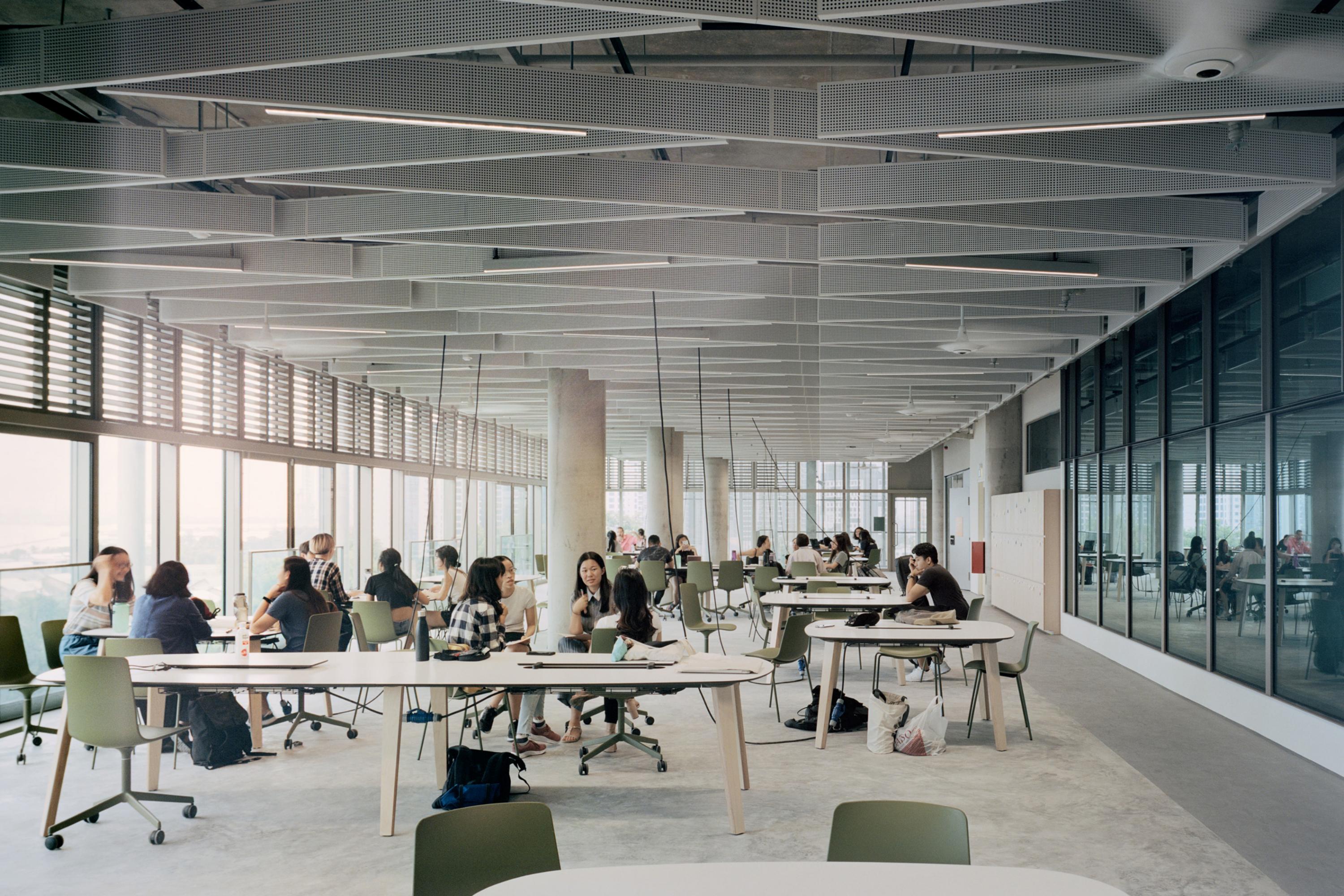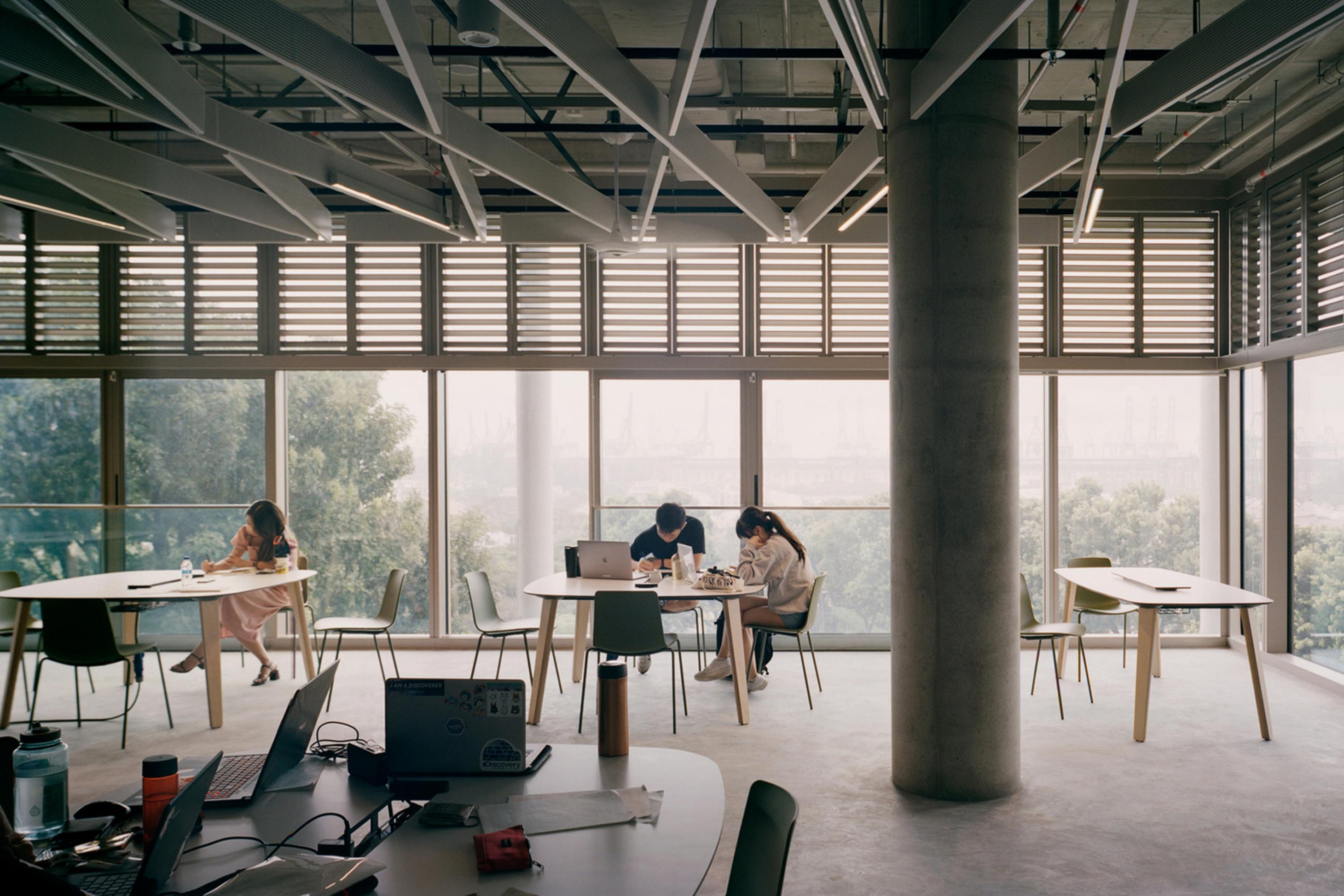Study to look at reducing disease spread in Singapore buildings
Sign up now: Get ST's newsletters delivered to your inbox

The review is likely to impact a range of buildings here from offices to schools and malls, based on the study's requirements.
PHOTO: RORY GARDINER
Follow topic:
SINGAPORE - An eight-month study will be launched in April on how to minimise the spread of infectious diseases in buildings, to not just help Singapore move towards living with Covid-19 but also better cope with future pandemics.
The Building and Construction Authority (BCA) will assess how this can be done through natural ventilation, and with the aid of mechanical methods such as the use of fans.
The findings will help government agencies review existing building standards which, a BCA spokesman said, are currently not meant to address disease prevention and control.
They will also lead to recommendations on best practices for wider adoption in the construction and ventilation industry – impacting not just offices and malls, old and new, but also places such as schools, according to tender documents seen on government e-procurement portal GeBiz.
The Building and Construction Authority (BCA) will assess how this can be done through natural ventilation, and with the aid of mechanical methods such as the use of fans.
The findings will help government agencies review existing building standards which, a BCA spokesman said, are currently not meant to address disease prevention and control.
They will also lead to recommendations on best practices for wider adoption in the construction and ventilation industry – impacting not just offices and malls, old and new, but also places such as schools, according to tender documents seen on government e-procurement portal GeBiz.
The 34-week study, which will scrutinise areas such as meeting rooms, auditoriums and shops, comes as more people move back into offices in line with the easing of Covid-19 measures. Since the start of the year, 50 per cent of staff who can work from home have been allowed to return to office.
Associate Professor Tham Kwok Wai of the National University of Singapore’s (NUS) Department of the Built Environment said the study is timely and much needed, as the pandemic has forced a rethink of building design and operations.
It is a natural development given Singapore’s move towards living with endemic Covid-19, with Prof Tham stressing a need to prepare Singapore’s infrastructure for other disruptive diseases to come.
Prof Tham said that airborne diseases can be stopped on three fronts – virus, host, and transmission method. By improving natural ventilation, viral concentration in the air can be diluted, hence reducing the chances of transmission.
Tender documents indicate that the appointed consultants will review local and overseas building codes as part of the study, and will carry out modelling and simulations to identify potential ventilation requirements, or revisions to existing ones.
Input from industry members and experts will also be sought.
The issue of building ventilation has come under the spotlight around the world because of the pandemic.
Professor Teo Yik Ying, dean of the NUS Saw Swee Hock School of Public Health, said that Covid-19 data collated locally and worldwide has shown that the coronavirus spreads easily in indoor, poorly ventilated environments.
The BCA has issued advisories on improving ventilation and indoor air quality in buildings since May 2020, together with the Health Ministry and National Environment Agency.
The latest advisory, issued on Sept 26 last year, called for building owners and facility managers to increase ventilation in air-conditioned premises, such as by opening windows and doors as frequently as possible, and operating exhaust fans at full capacity to expel air from indoor spaces.
But doing so has adverse implications as more energy will be required to cool air, said Prof Tham. The BCA added in its study requirements that this compromises efforts to mitigate climate change.
Associate Professor Tham Kwok Wai of the National University of Singapore’s (NUS) Department of the Built Environment said the study is timely and much needed, as the pandemic has forced a rethink of building design and operations.
It is a natural development given Singapore’s move towards living with endemic Covid-19, with Prof Tham stressing a need to prepare Singapore’s infrastructure for other disruptive diseases to come.
Prof Tham said that airborne diseases can be stopped on three fronts – virus, host, and transmission method. By improving natural ventilation, viral concentration in the air can be diluted, hence reducing the chances of transmission.
Tender documents indicate that the appointed consultants will review local and overseas building codes as part of the study, and will carry out modelling and simulations to identify potential ventilation requirements, or revisions to existing ones.
Input from industry members and experts will also be sought.
The issue of building ventilation has come under the spotlight around the world because of the pandemic.
Professor Teo Yik Ying, dean of the NUS Saw Swee Hock School of Public Health, said that Covid-19 data collated locally and worldwide has shown that the coronavirus spreads easily in indoor, poorly ventilated environments.
The BCA has issued advisories on improving ventilation and indoor air quality in buildings since May 2020, together with the Health Ministry and National Environment Agency.
The latest advisory, issued on Sept 26 last year, called for building owners and facility managers to increase ventilation in air-conditioned premises, such as by opening windows and doors as frequently as possible, and operating exhaust fans at full capacity to expel air from indoor spaces.
But doing so has adverse implications as more energy will be required to cool air, said Prof Tham. The BCA added in its study requirements that this compromises efforts to mitigate climate change.

The BCA spokesman said in Singapore’s tropical climate, natural ventilation or mixing it with other ventilation forms is a promising alternative to air-conditioning, due to its potential to deliver higher ventilation rates in an energy-efficient and sustainable manner.
Prof Teo cautioned that while infrastructure design can help reduce the spread of airborne diseases, occupancy density can also heavily affect the rate of disease spread.
“Having many people crowd in a confined space will certainly accelerate transmission regardless of whether the building was designed to be more resilient to outbreaks,” said Prof Teo.
“So while the infrastructure can mitigate the spread of infections, human behaviour and social factors are as important.”
“Having many people crowd in a confined space will certainly accelerate transmission regardless of whether the building was designed to be more resilient to outbreaks,” said Prof Teo.
“So while the infrastructure can mitigate the spread of infections, human behaviour and social factors are as important.”

